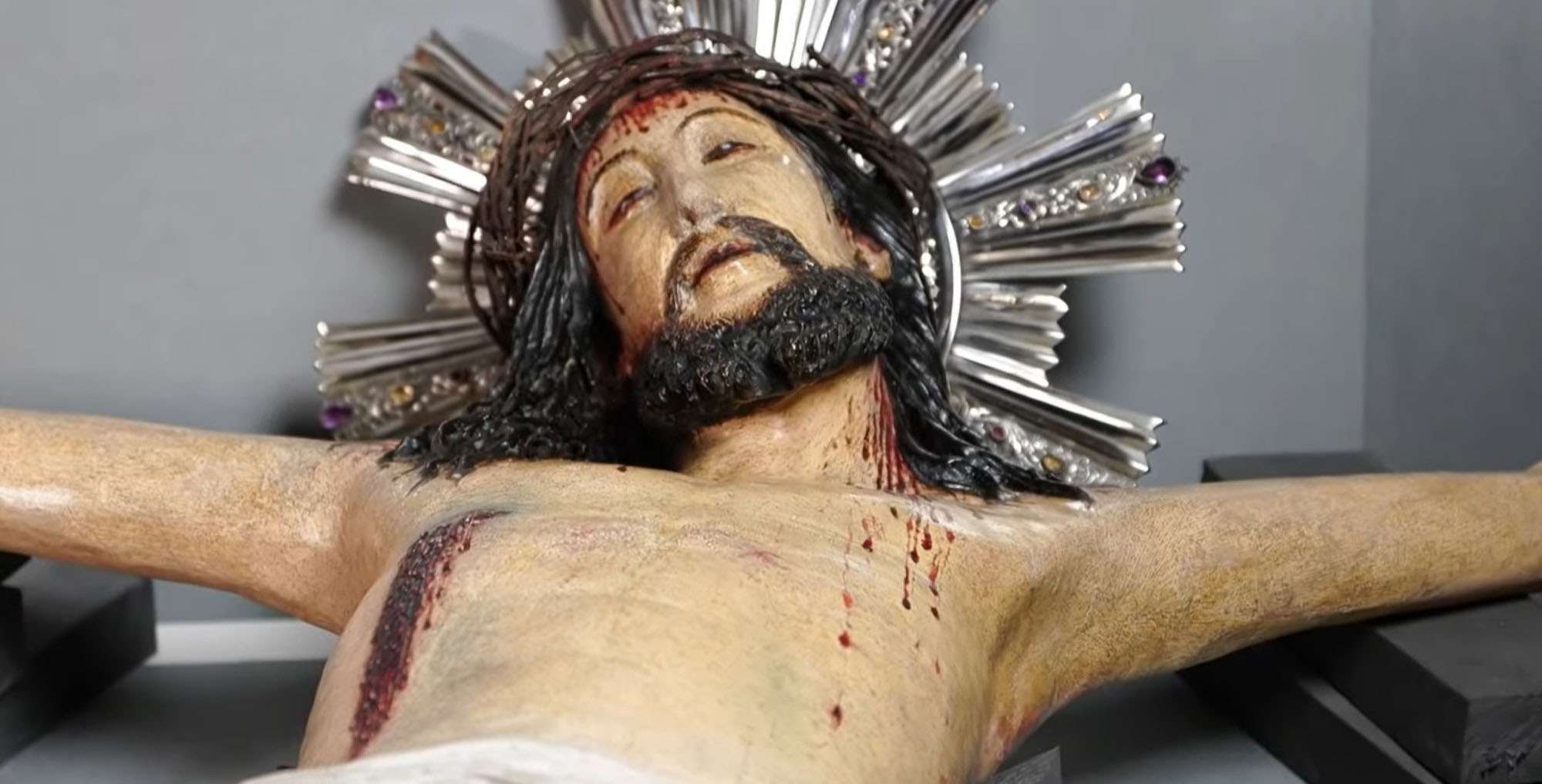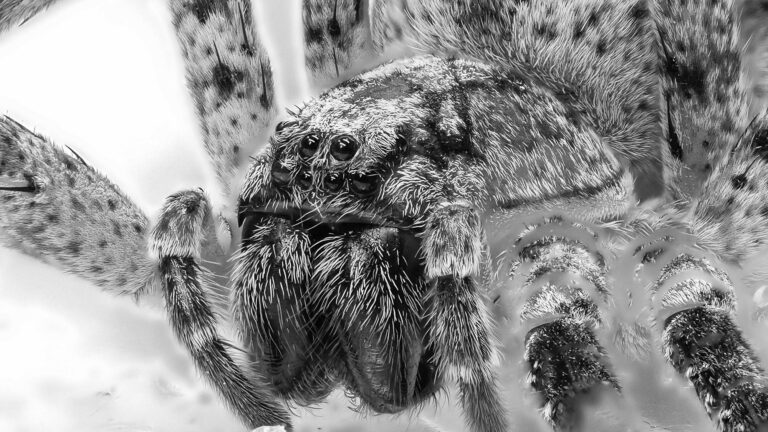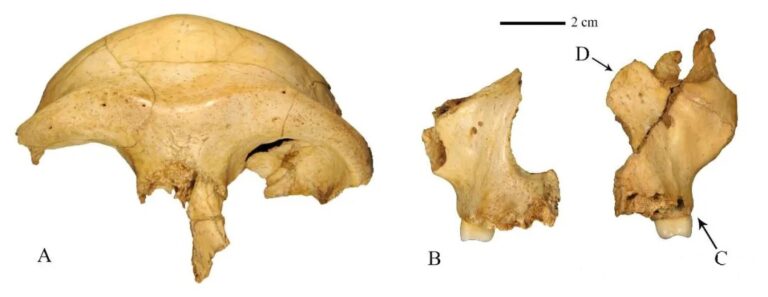A famous “black Christ” statue has turned out to actually be white following its restoration in Spain.
The Holy Christ of Lepanto – Barcelona Cathedral’s most venerated image – was recently restored by Ana Ordonez of the Centre for the Restoration of Artefacts of Catalonia and Nil Rider, the cathedral’s intangible heritage technician.
The dean of the cathedral, Santiago Bueno, said that the conservation and restoration process revealed rich colours, “which emphasise the passion of Jesus”.
The Holy Christ of Lepanto is said to have been “black” for just over a century.
Its restoration was reportedly carried out with relative ease, with just hot distilled water and a rubber needed to erase the dirt, according to local media.
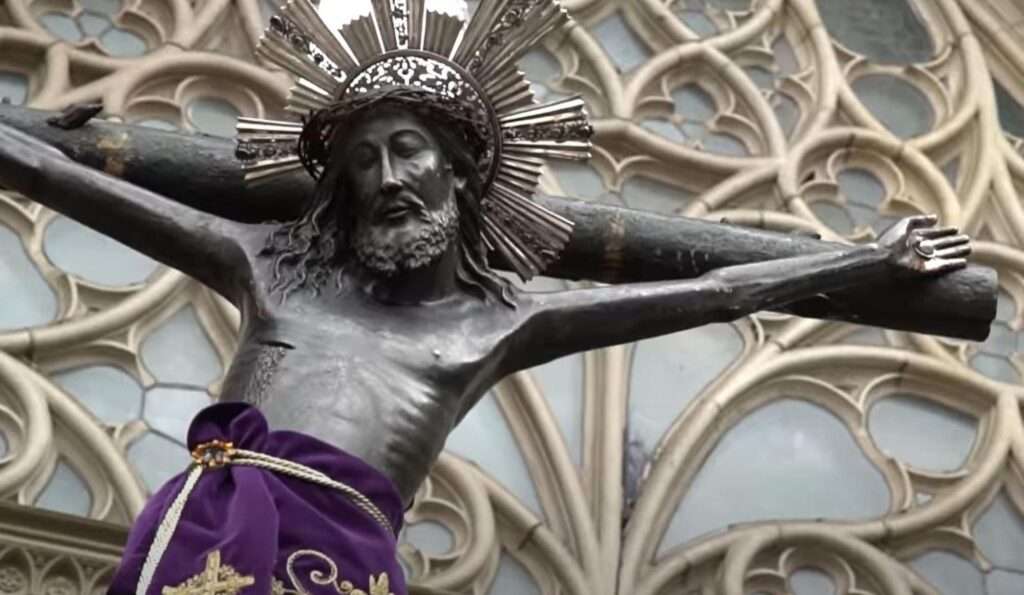
New dating of the figure places it between the 12th and 15th centuries – most likely around the 13th century – making it Gothic and not Renaissance, as previously believed.
According to legend, the Holy Christ of Lepanto was present at the Battle of Lepanto in 1571, when the Spanish Navy inflicted defeat upon the Ottoman Empire.
It allegedly presided over the Spanish galley Real – the flagship of Don John of Austria.
On 3rd May, he statue – made from a single piece of ash wood with added arms and a pine wood cross – featured in its first religious act since its restoration.
The Holy Christ of Lepanto is – or was – not the only “black Christ” statue in Spain’s Catalonia region.
The Virgin of Montserrat – dubbed La Moreneta (The Little Dark-Skinned One) – is a statue of the Madonna and Child venerated at the Santa Maria de Montserrat monastery on the Montserrat Mountain.
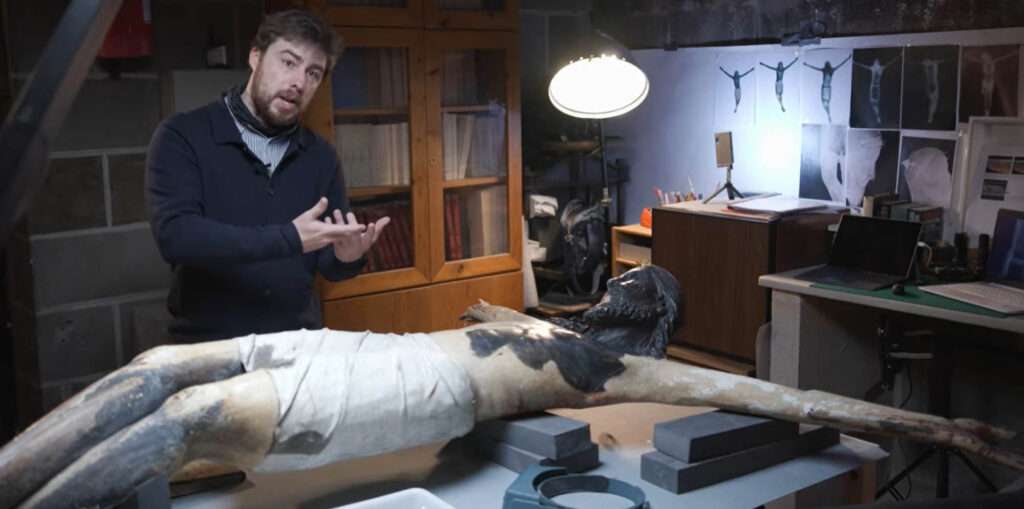
She is the Patron Saint of Catalonia, along with Saint George.
Barcelona Cathedral writes: “The restoration process has revealed the magnificent original polychromy of this wooden sculpture, which is in very good condition. You can appreciate the expressiveness of the face and the realism of the wounds of the Passion.
“Art historians specialising in sculpture now indicate that the crucifix could be from the 13th century. In any case, it is not from the 16th century, as was believed.
“The Christ of Lepanto is the most venerated image in Barcelona. Most of the year it can be found at the Chapel of the Blessed Sacrament in the Barcelona Cathedral, whereas during Lent it can be found at the Chapel of Saint Severus of Barcelona.
“Popular devotion is alive and has continued over the centuries. Reflecting this esteem, the confraternity of the Sant Crist de Lepant, which dates back to at least 1651, was founded to keep the chapel and the cult of the Blessed Christ, especially during Holy Week.
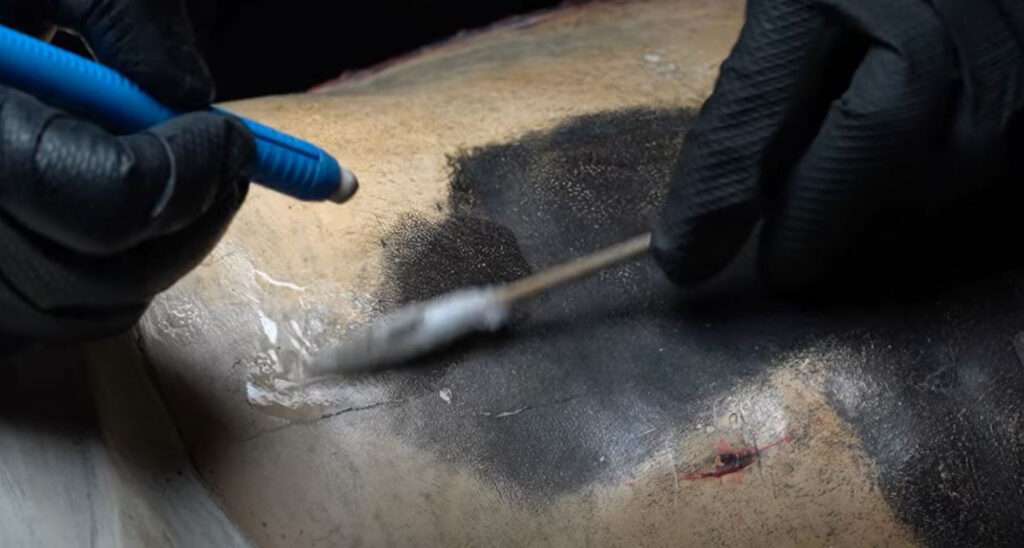
“The Cathedral decided to restore the sculpture because the paint was beginning to flake. After studying the composition of the polychromy, the colour has been delicately retouched in the most damaged areas, and the entire image has been cleaned.
“The darkened colour can be attributed to the effect of smoke and candle wax, but also to remnants of 19th-century varnishes and later repaintings to match the colour of the smoke and soot, materials that were easily removed with patience.
“It is a gothic carving, possibly from the 13th century, little documented thus far. There is news of an image of a Holy Christ in the Cathedral of Barcelona since the fifteenth century, which could be one and the same.
“Certain engravings and paintings suggest that at the end of the 19th century, it had not yet gotten its dark patina.
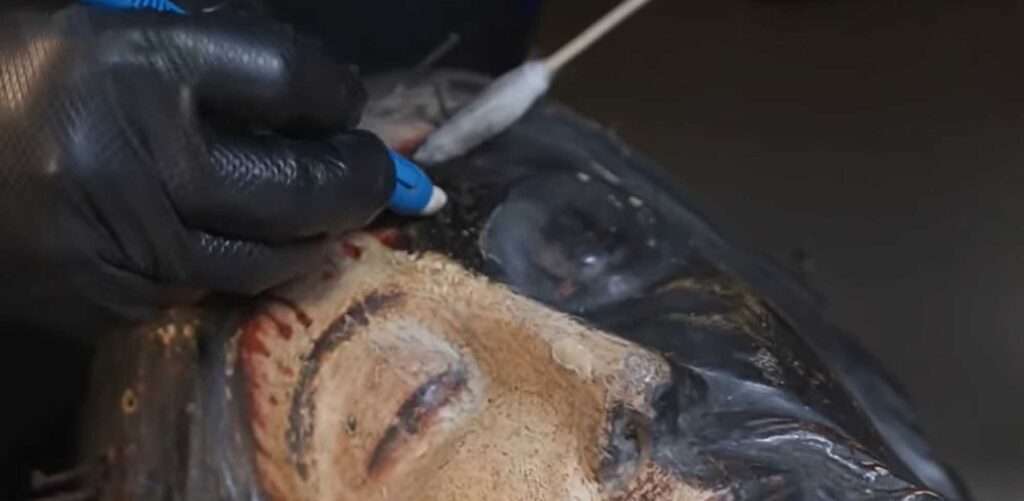
“According to tradition, this image was aboard the flagship at the decisive Battle of Lepanto of 1571, which prevented the Ottoman Empire from advancing further towards Europe.
“There are two traditional explanations for the characteristic curvature of the torso: according to one, it was to dodge a Turkish cannonball; as per the other, it was to cover a hole in the ship’s hold, where the statue was being kept at the time, and thus prevent the ship from sinking.”
To find out more about the author, editor or agency that supplied this story – please click below.
Story By: William McGee, Sub-Editor: Marija Stojkoska, Agency: Newsflash
The Ananova page is created by and dedicated to professional, independent freelance journalists. It is a place for us to showcase our work. When our news is sold to our media partners, we will include the link here.

